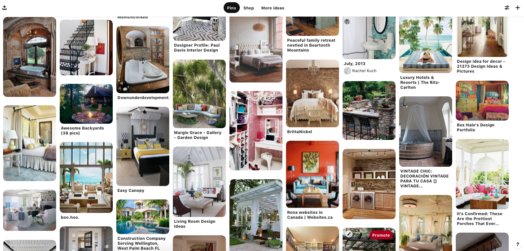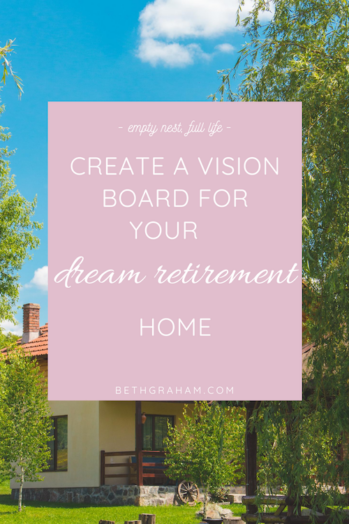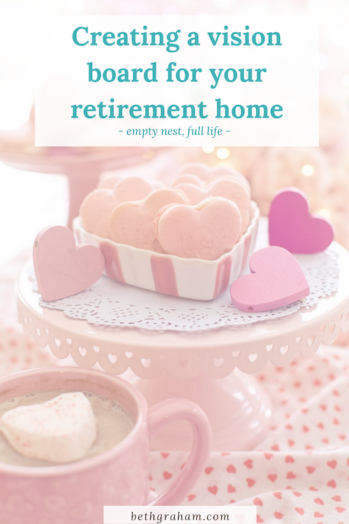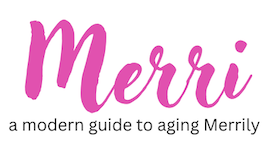I’ve been planning my retirement home for several years. Once the kids left home, my husband and I became a bit nomadic and moved around several times as he explored second careers after his first retirement from the government. We generally lived in small apartments knowing that it was just a temporary home. So I dreamed of having a great forever home. I spent countless hours with home magazines and on Pinterest and decided to create a vision board to plan a retirement home.
Vision boards are so underrated. I’ve used them in the past to design my home office, a space I needed to be uber-creative and uncluttered. I also used a vision board when shooting photography for my blog many years ago (note to self: time for a new photo shoot!). And I used one when I took a “be your own brand” course to figure out the look and feel I was trying to achieve. So a vision board is simply a visual representation of what you’re trying to achieve, whether it’s new summer outfits or a room design. So to create a vision board to plan a retirement home just makes sense. You can see it before you commit to it. (My friend Elizabeth wrote an article on using a vision board to get through this pandemic year.)
How to create a vision board
There are a few different ways to create a vision board. You can do it the old-school way, with hard copies, or the modern way, digitally.
I’m an impulsive shopper. Those racks at the check-out stands? I’m a sucker! Even with big purchases like furniture, I tend to be a bit impulsive. I’m not a planner. But since this was going to be my forever home, I decided to be a bit more mindful and thoughtful, and take my time planning it out.
I started by visiting all those home stores and picking up their catalogues like Pottery Barn, Ballard Designs, Crate & Barrel, Arhaus. I chose a rainy afternoon and scoured the catalogues for photos of room designs, colors, textures, and fabrics that I loved. Sometimes, I’d just see table-top decor I loved so I’d circle that in the photo as a reminder to why I chose that page. I tore out pages as I went through the process and stored them in a folder. Over time, I began buying home decor magazines and going through the same process. I decided I needed to live with these selections for a few weeks before committing them to paper so periodically, I’d pull that trusty old folder out and spread the pages out on the floor and just feel them. Once I felt comfortable, I trimmed up all of the pages and mounted them on poster board. My vision for my retirement home was coming together!
Another great way to create a vision board for a retirement home is digitally. Sites like Houzz, Wayfair, and others have the functionality to let you design rooms. I found that Pinterest is a bit more user friendly for creating vision boards. I created a board and began pinning photos of rooms with colors, decor, and layouts I loved. Unlike my poster board, this was a work in progress, something I could change up and add to over time.

So once we (finally) chose our home, I was able to get serious about bringing these visions to life. Using a vision board to plan a retirement home helped tone down my impulsivity and reduce the chance that I’d buy things based on emotion and not on planning. I’m doing a new vision board now for my outdoor spaces so I’ll share the before and after soon!



